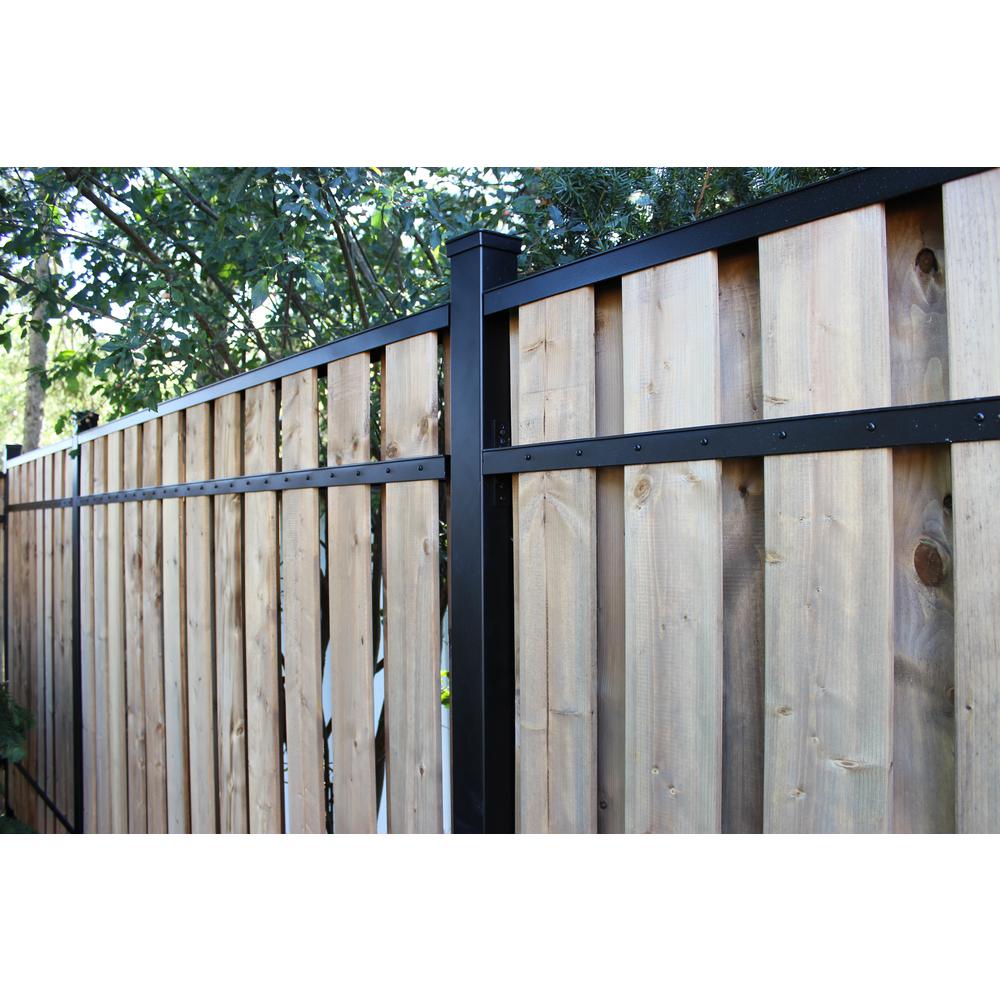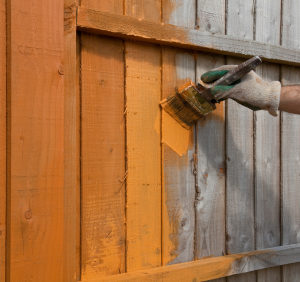So you got a new fence, and now you have a few questions. Won’t my fence age over time? Do I have to seal it somehow? There are three basic options for “finishing” a fence: painting, staining, or leaving it natural. There are benefits and drawbacks to each option. We are here to help you decide which route is the best for you!
Paint
Painting fences was more popular before there were so many options for stains. We would least recommend painting, because it does require a lot of maintenance. If you do decide to go ahead and paint your fence, you can expect to have to repaint it every 1-3 years, as paint does tend to crack and peel.
Also keep in mind that once you do need to repaint, you will need to scrape off all of the existing paint, prep the surface for new paint, and then finally repaint. It is a lot of work and a lot of time, and over time the painting and repainting will end up costing you more.
Now, we know what you’re thinking: “but how else do I get that white picket fence look?” Well, there are a few options. One is to buy a white vinyl picket fence. Vinyl will never need to be stained, painted, or maintained other than a good cleaning every once in a while. The other option is to use a solid white stain. Read on to find out more about this option!
Stain
Stain wins over paint most of the time, and that’s because it requires so much less maintenance than paint. It may be a higher cost initially, but you will not need to re-stain over and over again.
Eventually the stain will fade and need to be redone, but not nearly as frequently as paint. Stain does not peel or crack, so it requires way less preparation than repainting. A good power wash or washing with a deck cleaner will give you a clean slate to work with before re-staining, without all the scraping and peeling.
There are a lot of options when it comes to staining your fence. One option is a solid stain, which, as mentioned above, will give you that traditional “white picket” look without all the maintenance of paint. Or, if you really love the look of natural wood and just want to protect your fence, there are plenty of semi-transparent options to choose from, too. There are even clear options that simply serve to waterproof and protect your fence.
Natural
The third option for finishing a fence is simply leaving it natural and allowing it to weather over time. This option, of course, requires the least amount of effort, but it does leave room for the elements to take a toll on your fence over time. However, the rustic, weathered look is popular these days, and quality wood will last a while even if it is left to the elements.
Simply power washing or pressure washing your natural fence can bring it back to life, too, if you choose not to paint or stain but would like to try and keep the “new” look.
White cedar ages to a beautiful, silvery grey. Many people really like this look, and will choose it over attempting to preserve the brand new look.
Which will you choose?
Definitely be sure to consider the time, cost, and which option best complements the style of your home and property.
Let us know what you decided to do by leaving a comment below!












